I don’t know about you, but when I hear the word “sorghum” I think about old-fashioned recipes and The South, sorghum on pancakes and lazy Sunday afternoons. Which is why I was so surprised to see a whole booth just for “sorghum” at a recent pet industry trade show. Why would I want my dog (or cat) to eat a food with a sugary syrup in it? My curiosity was peaked.
Sorghum – the grain
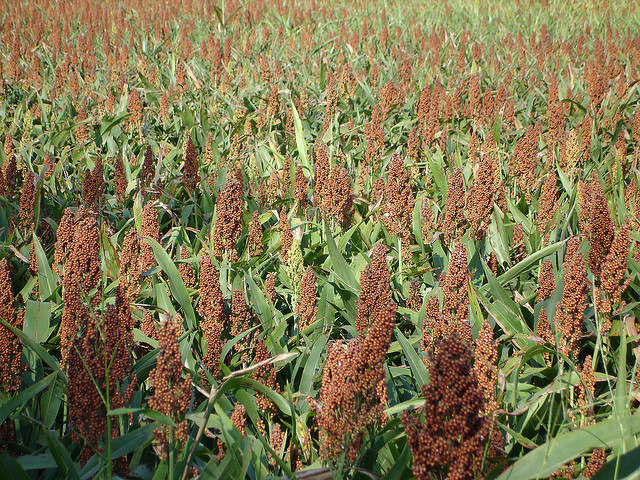
It turns out, that sorghum is grain, which can be made into many things including syrup, bran, flour, and several types of “feed” (tan, black, decorticated or flaked).
Sorghum syrup has pretty much no nutritional value, containing no protein or fiber, it’s really just carbs and sugars.
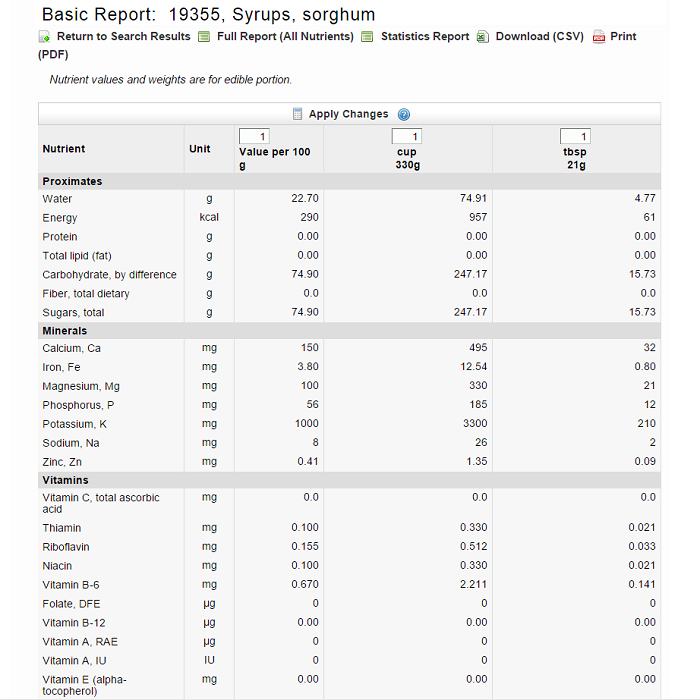
On the other hand, in grain form, it has quite a bit of protein, some fiber and is a lot lower in sugar. It has the same amount of carbs, however.

More important, is how it stacks up to other common grains and fillers used in dog foods.
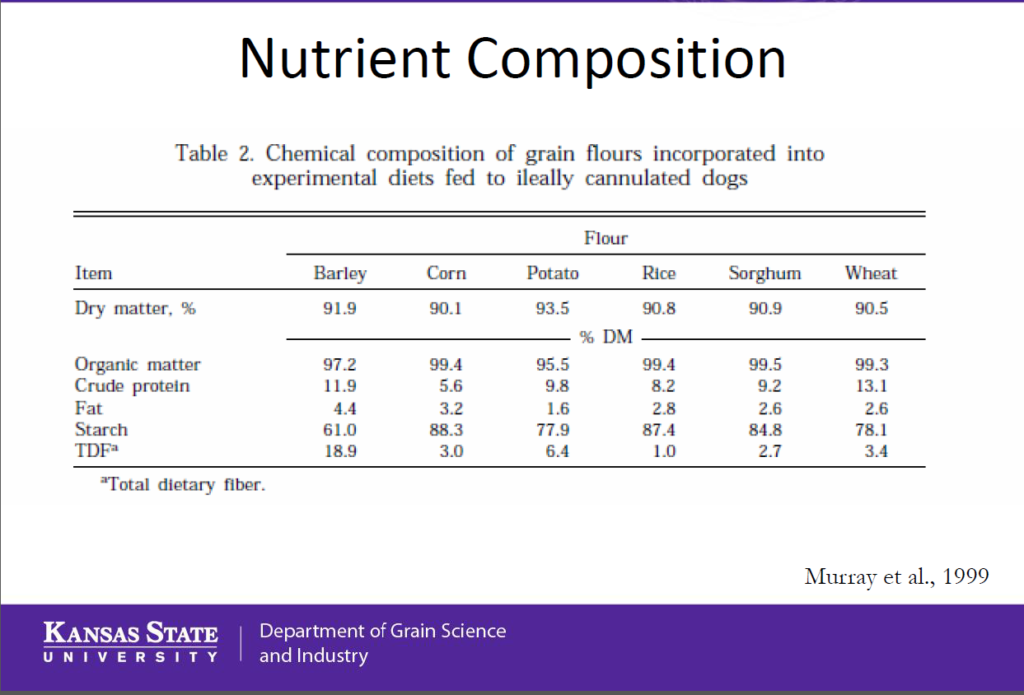
This table was created by the Kansas State University Department of Grain Science and Industry under Greg Aldrich, PhD as part of a research study, “Is Sorgum a Superfood for Modern Pet Food?”. As you can see, sorghum is similar to most of these grains. Now before you think, wait, wheat has the most protein, so it must be best, you have to remember that each dog is going to have different nutritional needs. Some may need more protein than others, some may need more fat. This chart is just comparing them so you can make a more educated choice about your dog’s food. If you are unsure about your dog’s dietary needs, ask your vet.
Also, some dogs have issues with gluten. Sorghum is gluten free, making it a good substitute for wheat in that case. It’s also Non-GMO and The United States is one of the top 3 suppliers, so finding local sources for pet food is easy.
A Superfood?
This term is used a lot nowadays – it’s become a great marketing gimmick. But what exactly is a superfood?

As you can see, there’s isn’t really a set definition for it, except that the food should be higher in nutritional value that other foods.
Some examples of foods that are commonly described as “super” are:
- Dark green veggies
- Fruits such as blueberries and pomegranates
- Legumes such as peanuts and beans
- Whole grains like quinoa, amaranth and chia
- Salmon, sardines, mackerel
- Hemp
- Kelp
- Grapeseed, etc.
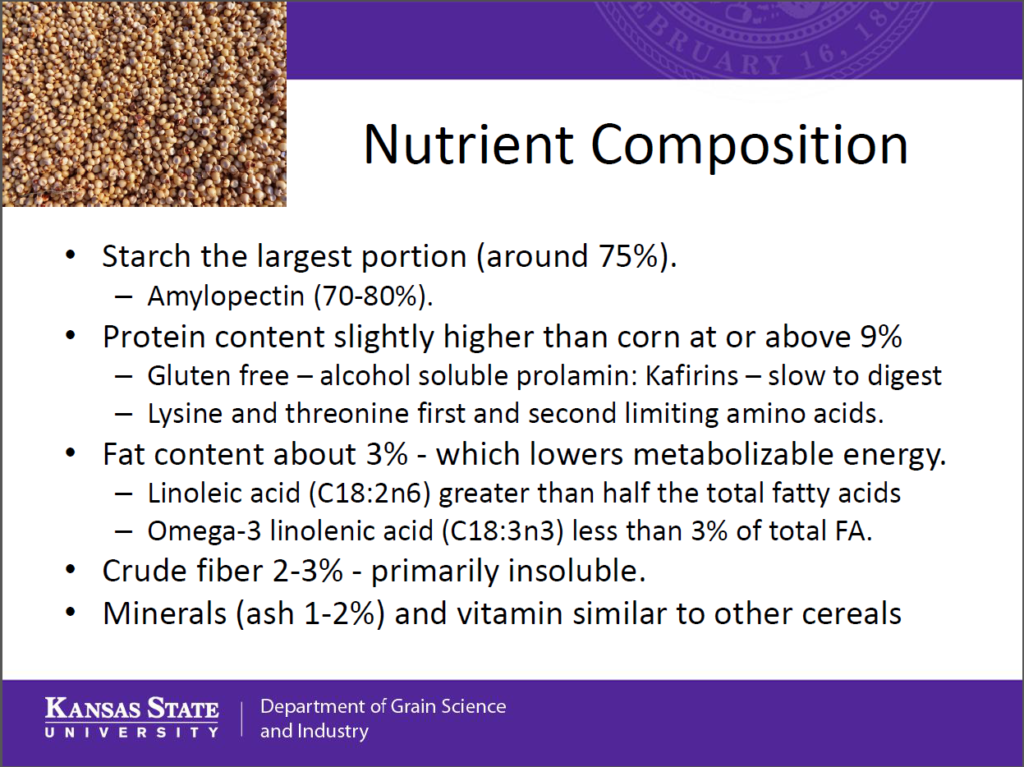
Aldrich’s research team found that Sorghum did not cause the insulin spike that corn does, and it took longer for it to peak, meaning it may be a much better grain for pets with diabetes than corn. It’s also high in antioxidants.
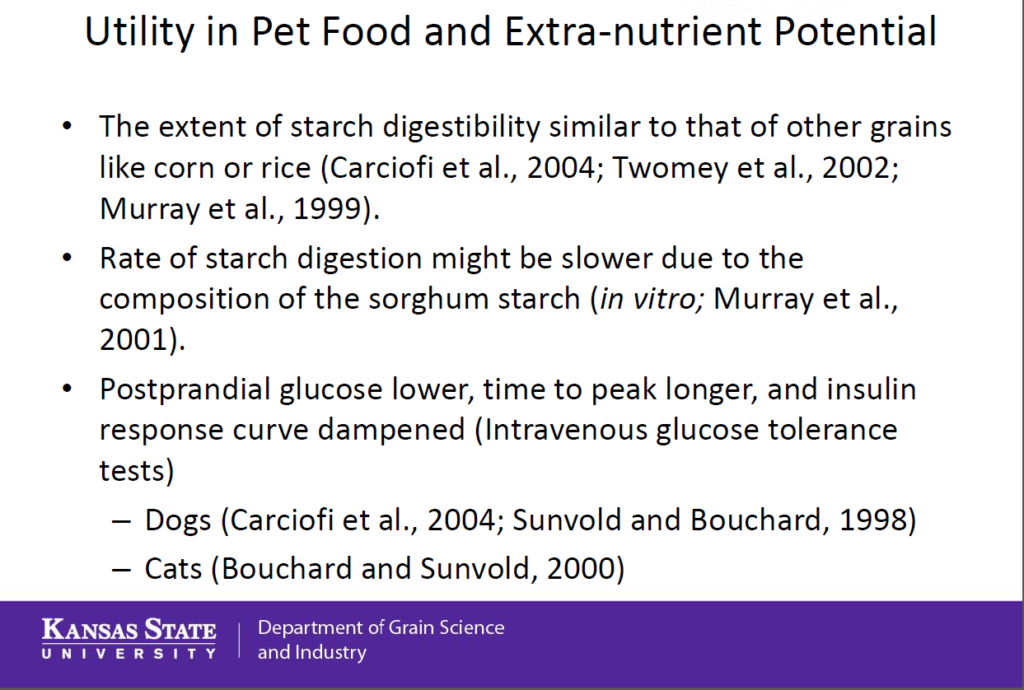
Tannins
They note that all sorghums contain “condensed tannins.” Since I am not a botanist or a chemist, finding a definition of that those where that would make sense to the “rest of us” was difficult. They are a complex part of plant life and we need not go into all the details. However, I think this definition from Cornell University is the easiest to understand for our purposes, which is pet food:
Tannins act as a defense mechanism in plants against pathogens, herbivores and hostile environmental conditions. Generally, tannins induce a negative response when consumed. These effects can be instantaneous like astrigency or a bitter or unpleasant taste or can have a delayed response related to antinutritional/toxic effects. (ansci.cornell.edu)
Basically, tannins make a food less digestible due to their strong binding properties. According to Cornell University, several studies have shown that tannins decrease organic matter, fiber, and protein digestion. Their bottom line? “The presence of tannins in food sources for monogastric animals, is generally viewed adversely, though their contribution to red wines is certainly an exception. “ (www.ansci.cornell.edu)
Using Tannins?
Aldrich’s team has a different take on Tannins. They believe they may be able to use the tannins properties to “identify and select sorghums for beneficial properties at the expense of the anti-nutritional properties.” Basically, they could formulate the food so the pet gets the nutrients he needs (say more protein) without those he doesn’t (say sugar and fats, just as an example).
The Kansas State University research study deemed sorghum a “superfood.”
Grain Risks
It’s important to note that since sorghum is a grain, it has all the same problems every other grain has – the “extras” that come with them.
“To me, the true risk of grains are mycotoxin contamination and GMO,” says Susan Thixton, Pet Food Safety Advocate and founder of TruthAboutPetFood.com. “Mycotoxins have been highly studied and have been scientifically proven to cause serious health risks even at low levels.” You can read more about her take on mycotoxins here.
Mycotoxins are the deadly molds that grown on grains while being stored. They are responsible for many illnesses and chronic diseases, and aflatoxin contaminations were a large part of the huge food recalls in 2007.
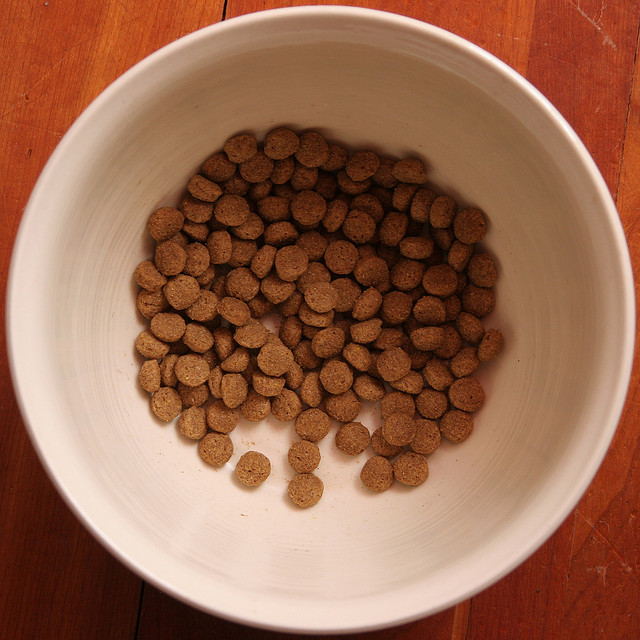
In addition to these concerns, the Dog Food Advisor mentions other “added ingredients” that end up in the grain while it’s being stored, including:
- Insects (red flour beetles, granary weevils, rice weevils, meal worms, flat grain beetles, Indian meal moths, saw-tootch grain beetles)
- Grain Mites
- Mold
They explain that the grain mites are related to dust mites and can be a cause for allergy issues in pets. If you think your dog may have food sensitivities, see our list of the 12 Best Dog Foods For Allergies.
So, Should Sorghum Be In Your Dogs Food?
If you feel like I haven’t answered this question, then you’d be right. Like with most of what goes on in the pet food industry, everyone had a different take on the matter. And I am definitely not convinced one way or the other, based on these findings.
But know you have some facts. Their may be some positives about sorghum (the grain NOT the sugar/syrup!) but, there are also some dangers. If your dog suffers from allergies, you may want to try a grain-free diet and. Again, talk to your vet. At least know you know a little bit more about what goes into your dog’s food.
 Toledo, United States.
Toledo, United States.